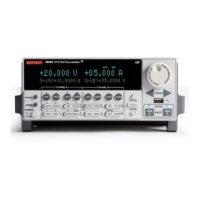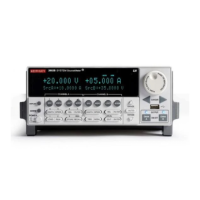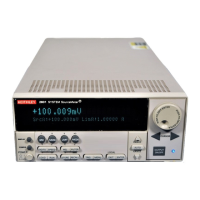System SourceMeter® Instrument Reference Manual Section 6:
2600BS-901-01 Rev. C / August 2016 6-51
The programming example below illustrates a TSP-Link reset operation and displays its state:
tsplink.reset()
print(tsplink.state)
If the reset operation is successful, online is output to indicate that communications with all nodes
have been established.
Using the expanded system
Accessing nodes
A TSP-Link
®
reset command populates the node table. Each instrument in the system corresponds to
an entry in this table. Each entry is indexed by the node number of the instrument. The variable
node[N] (where N is the node number) is used to access any node in the system. For example, node
1 is represented as entry node[1] in the node table.
You can access all the remote commands for a specific node by adding node[N]. to the beginning
of the remote command, where N is the node number. For example, to set the NPLC value for the
source-measure unit (SMU) A on node 1 to 0.1, you could send the this command:
node[1].smua.measure.nplc = 0.1
The variable localnode is an alias for node[N], where N is the node number of the node on which
the code is running. For example, if node 1 is running the code, localnode can be used instead of
node[1].
The following programming examples illustrate how to access instruments in the TSP-Link system
(shown in TSP-Link connections):
• You can use any one of the following three commands to reset SMU A of node 1 (which, in this
example, is the master). The other nodes in the system are not affected.
localnode.smua.reset()
• The following command will reset SMU A of node 4, which is a subordinate. The other nodes are
not affected.

